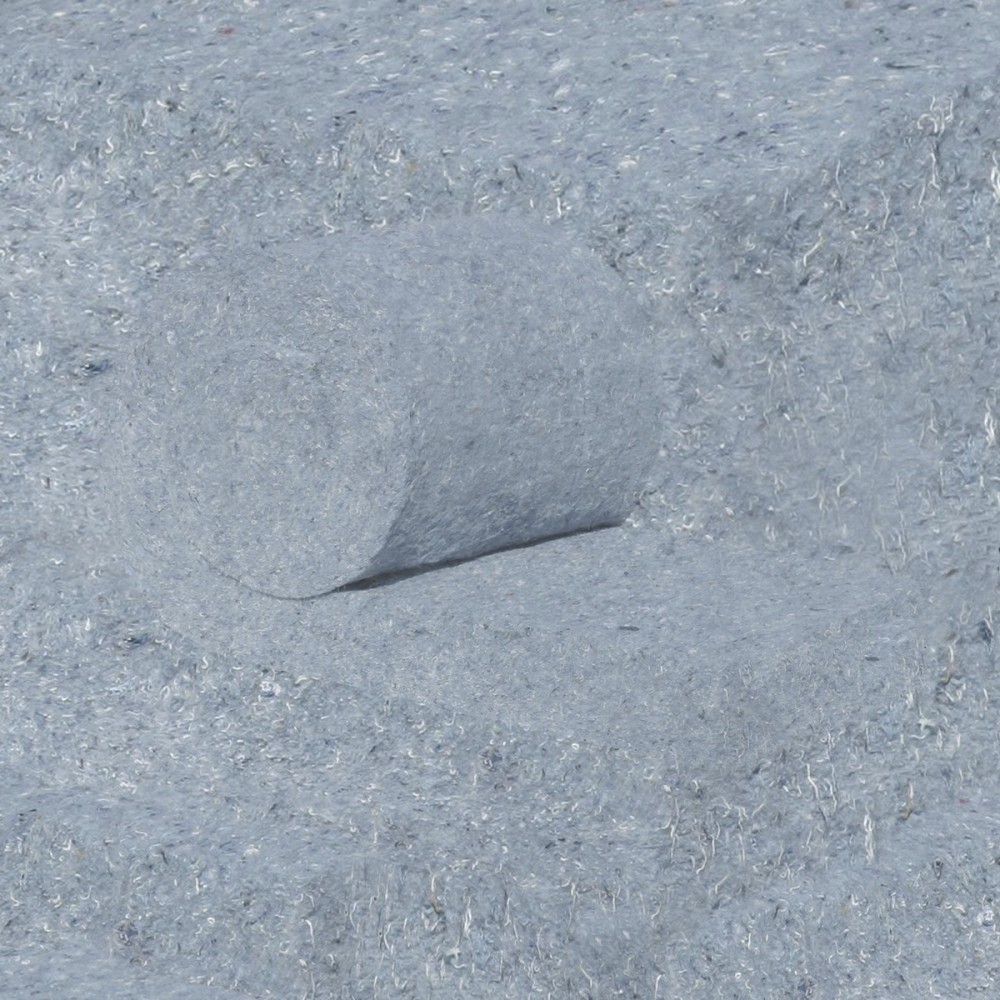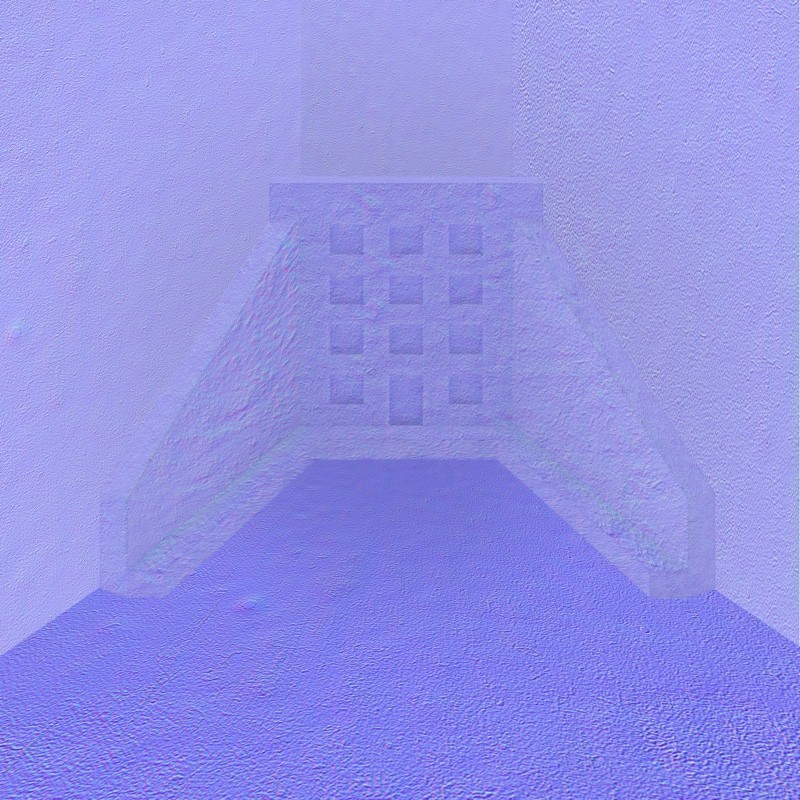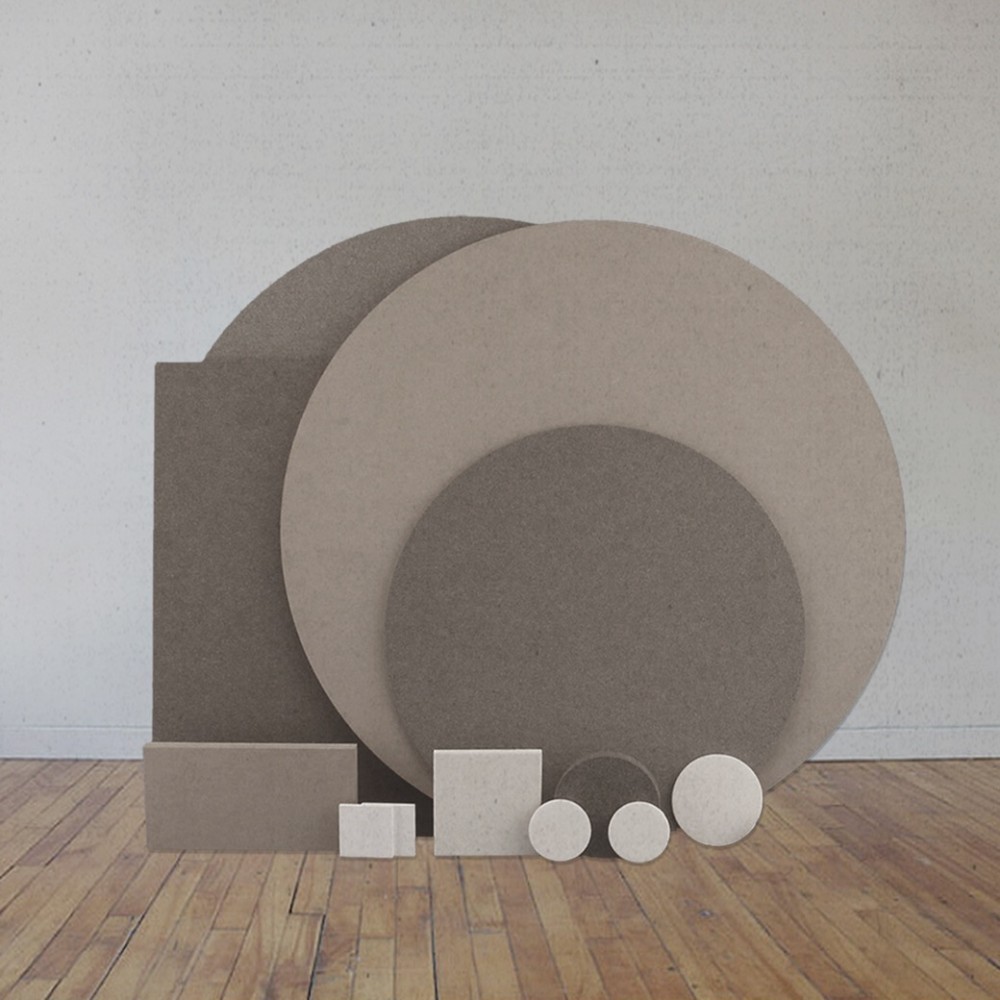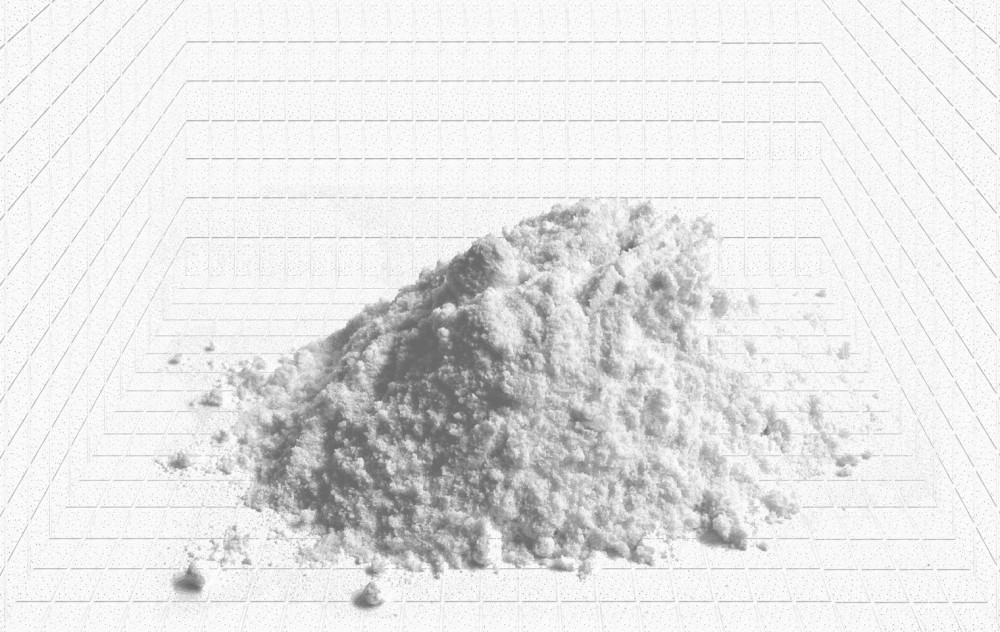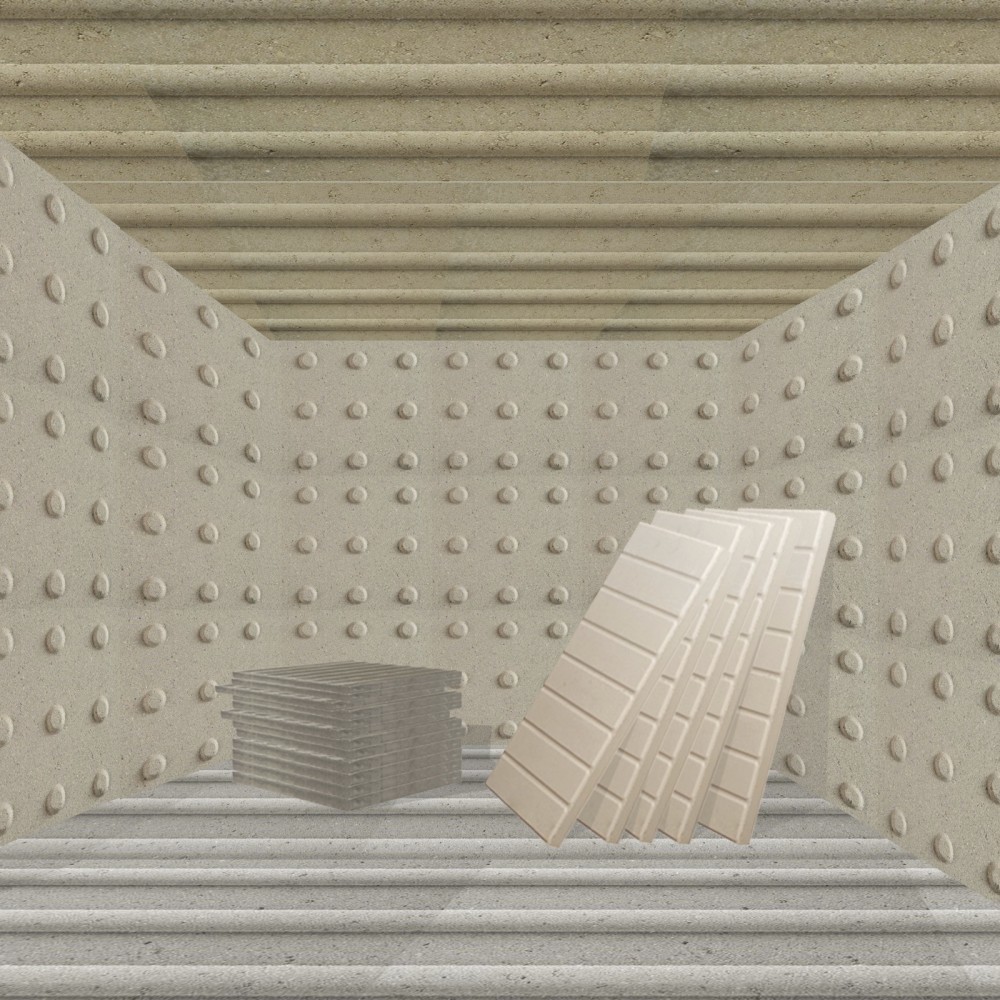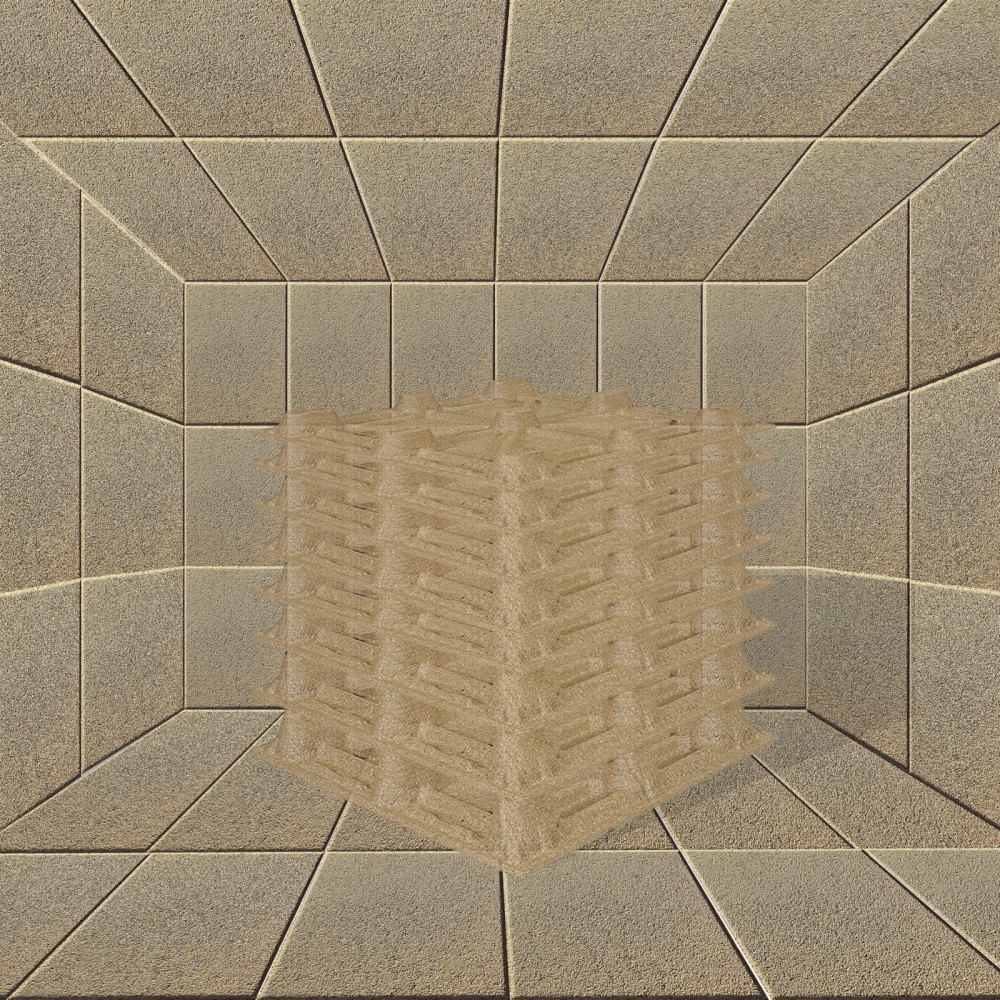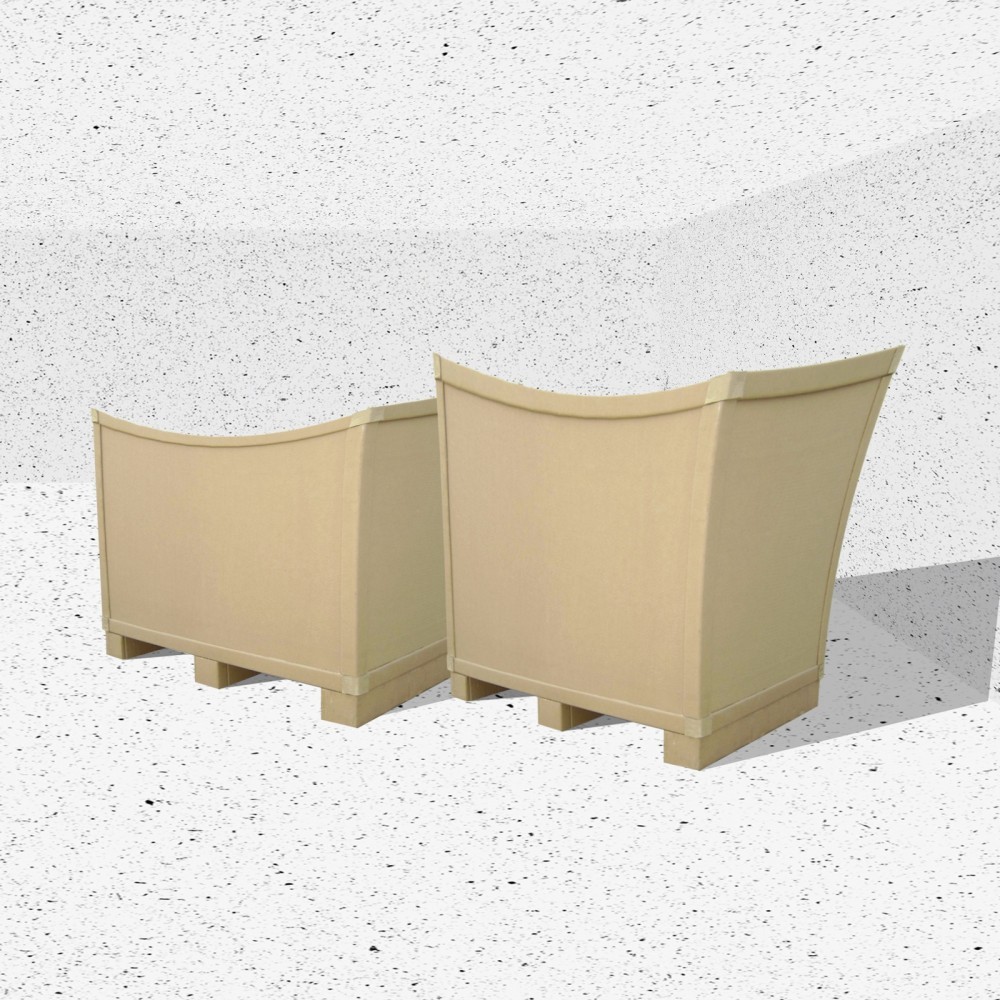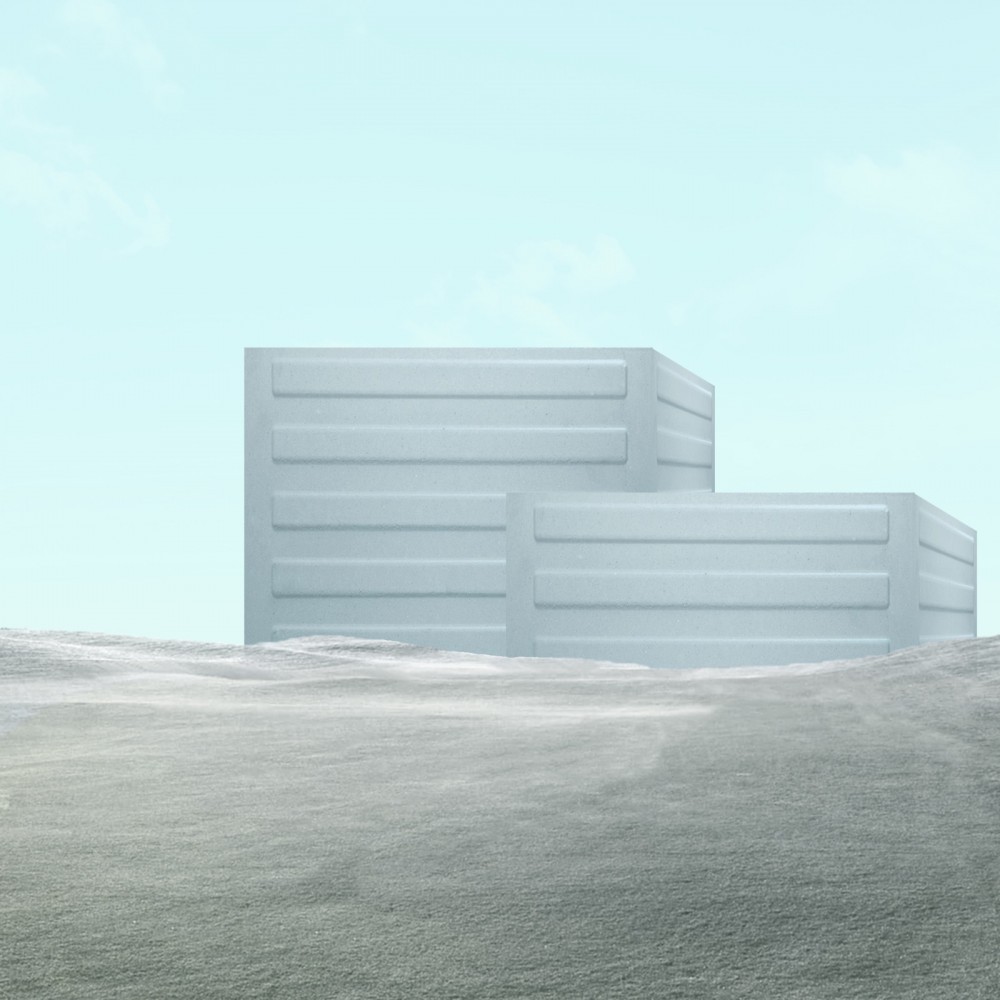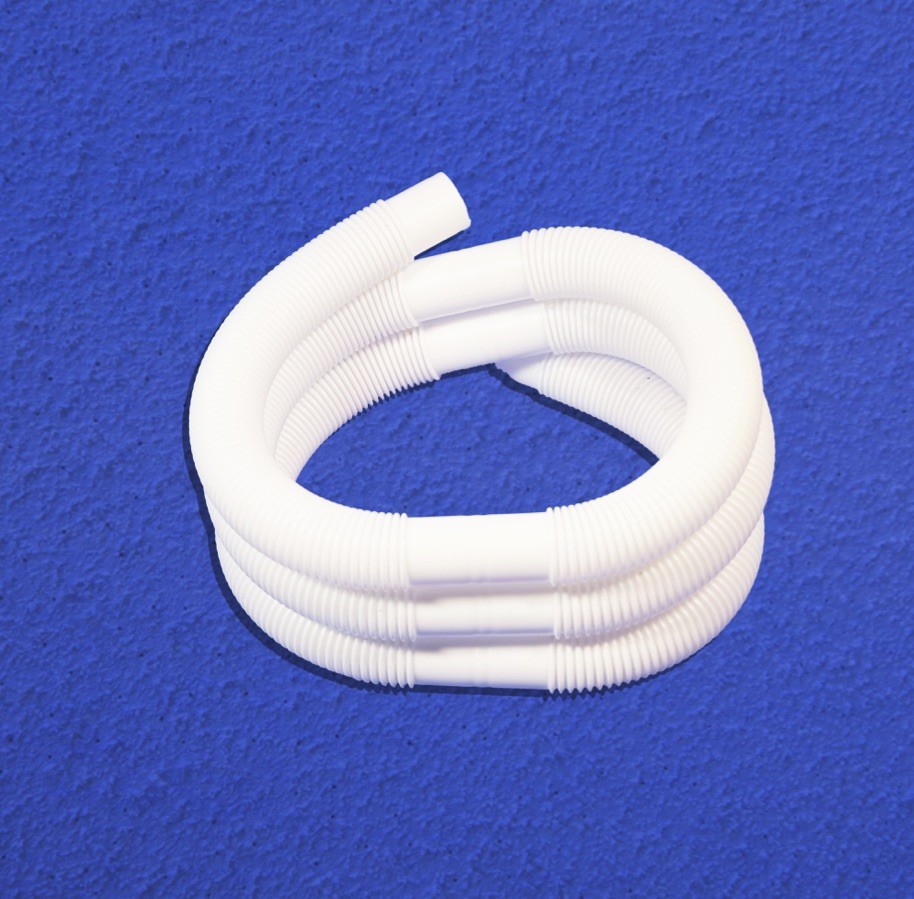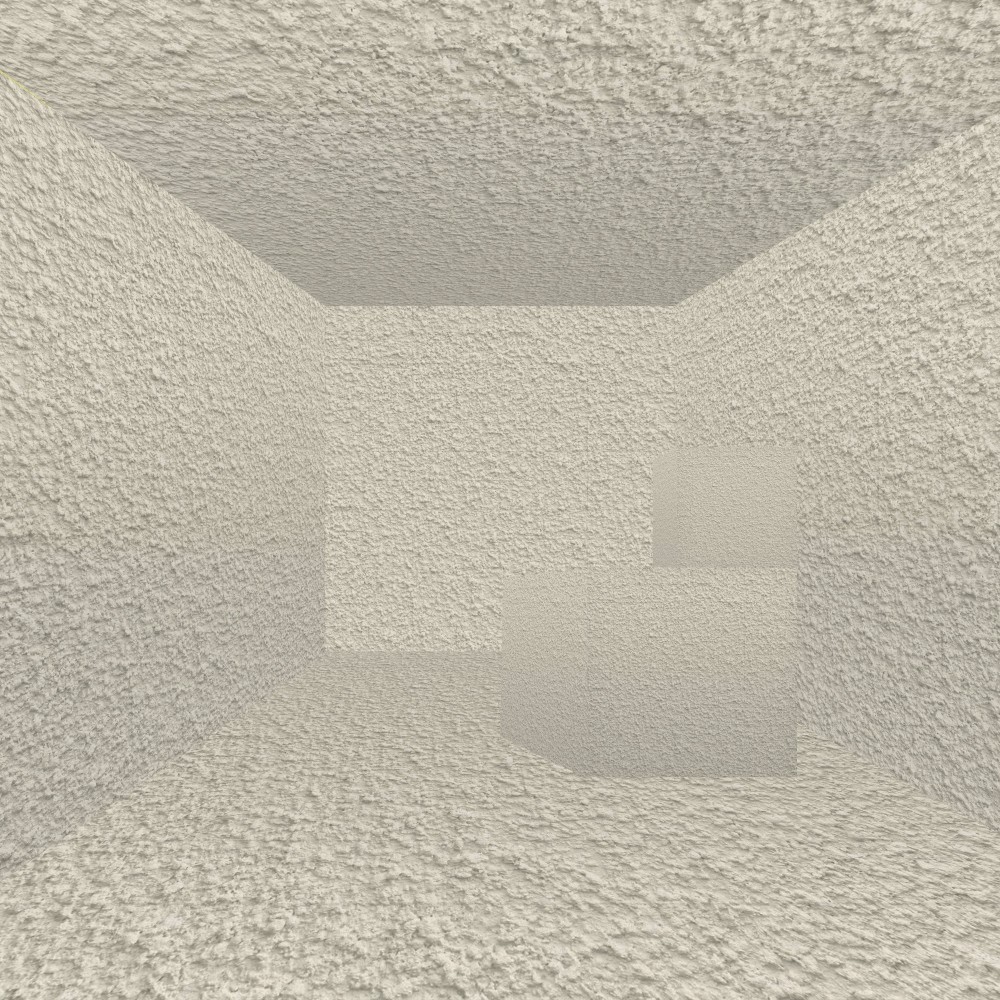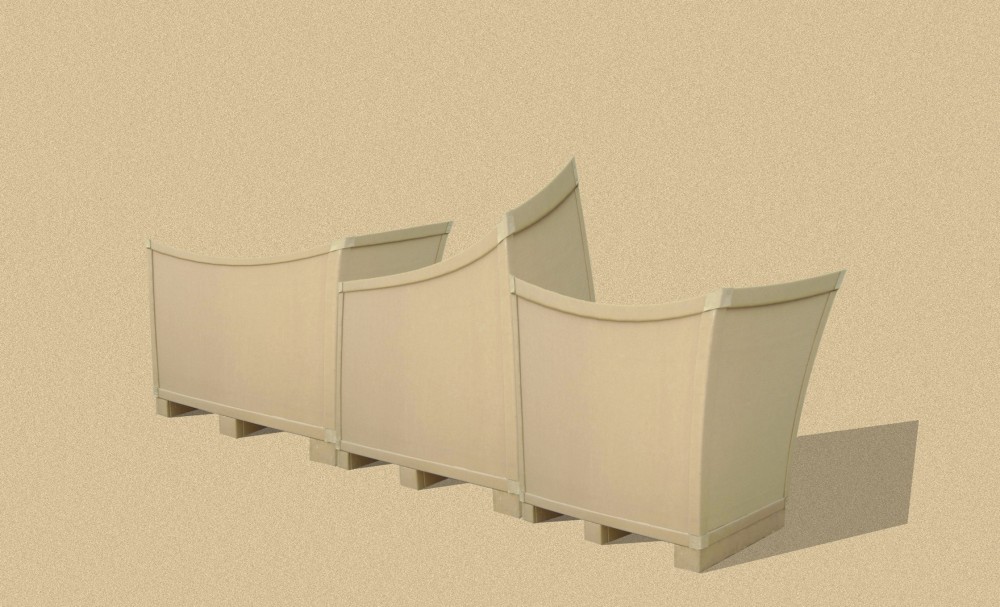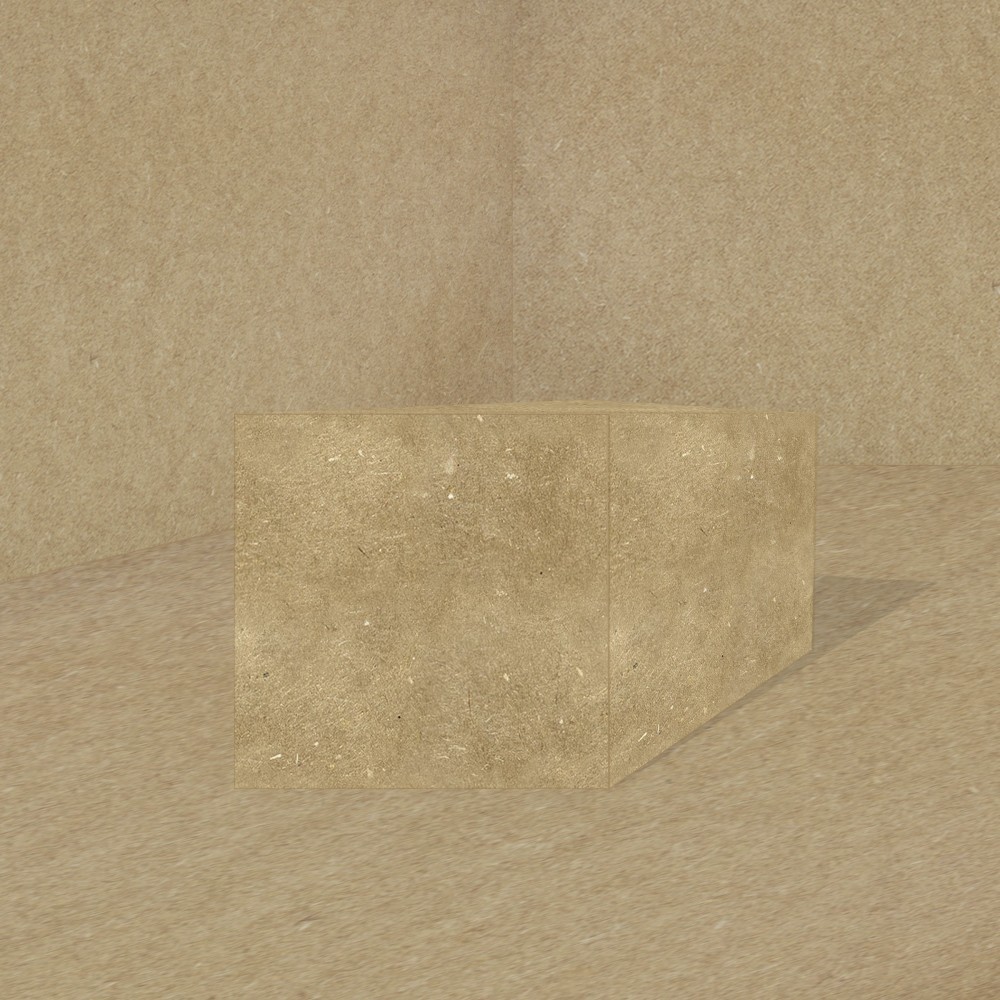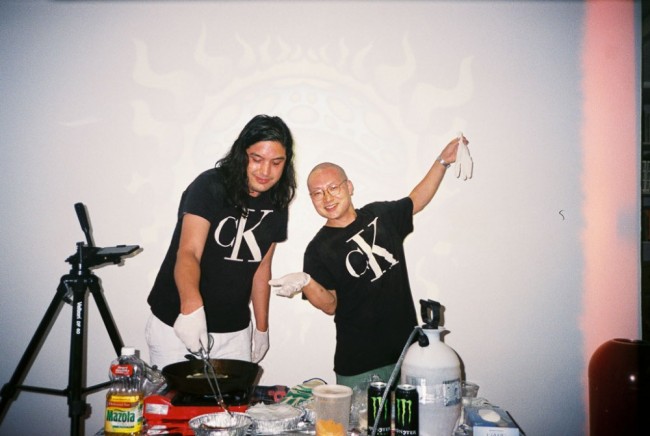STOCK OPTIONS: A Taxonomy of Construction Materials Turned Into Architectural Portraits
Collecting, classifying, and reassembling have a long history in architecture. They have often been deployed in order to create alternative genealogies from existing conditions. STOCK is an example of this practice, a visual research project that explores catalogue representation techniques of construction materials. It is a catalogue of the catalogue, a collection of representational particularities in material portrayal. I create these images by purchasing materials from big box stores which I then return, a $200 rotating credit. I then photograph them in a style that imitates that of the catalogues. The project points to the fact that even in the portrayal of the mundane and the presumably technical, there are many aesthetic choices being made. The methodology for creating these images is central to the attitude of Stock, using low-stakes resources to create a kind of useless advertising for a product, Stock does not aid in the selection or purchase of these materials, it does not provide a link to the manufacturer…The project points to a sense of crisis and ambivalence about the nature of creative work under capitalism.
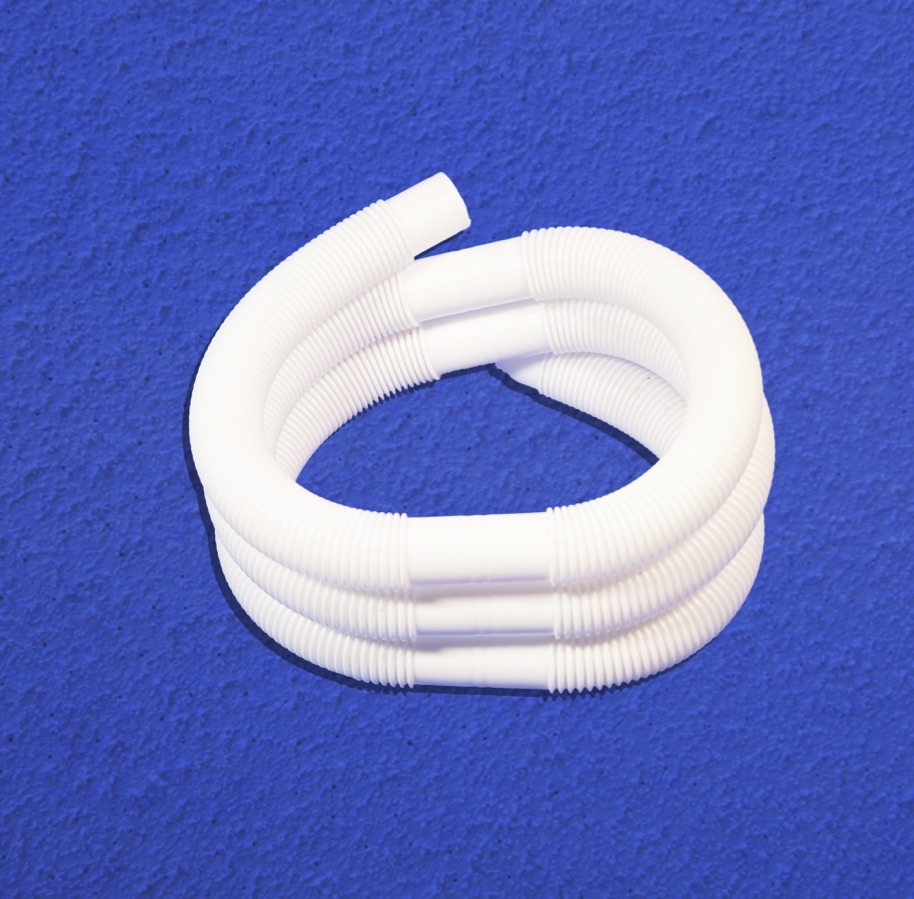
Plastic hose on blue - 2017
It is a simultaneously specific and generic project that highlights authorship processes that go so commonly unexamined. In large part, the project consists of the labor of sifting, combining, and organizing both images and materials. It is a continuous toil that is as much critical as it is mundane in order to create a repository of material portraits.
STOCK has been reinterpreted through the lenses of a few projects over the last couple of years — maintaining the core theme of the project but approaching it with different focuses. One such is XS TO XL, a series of proposals that explore the scalability of off-the-shelf materials. By visually re-contextualizing them, I explore their formal idiosyncrasies and embedded sculptural properties. The project asks, “What is the formal character of the machined object and that which we presume to be dictated by function? Can a structure be the precise material representation of its makeup?”
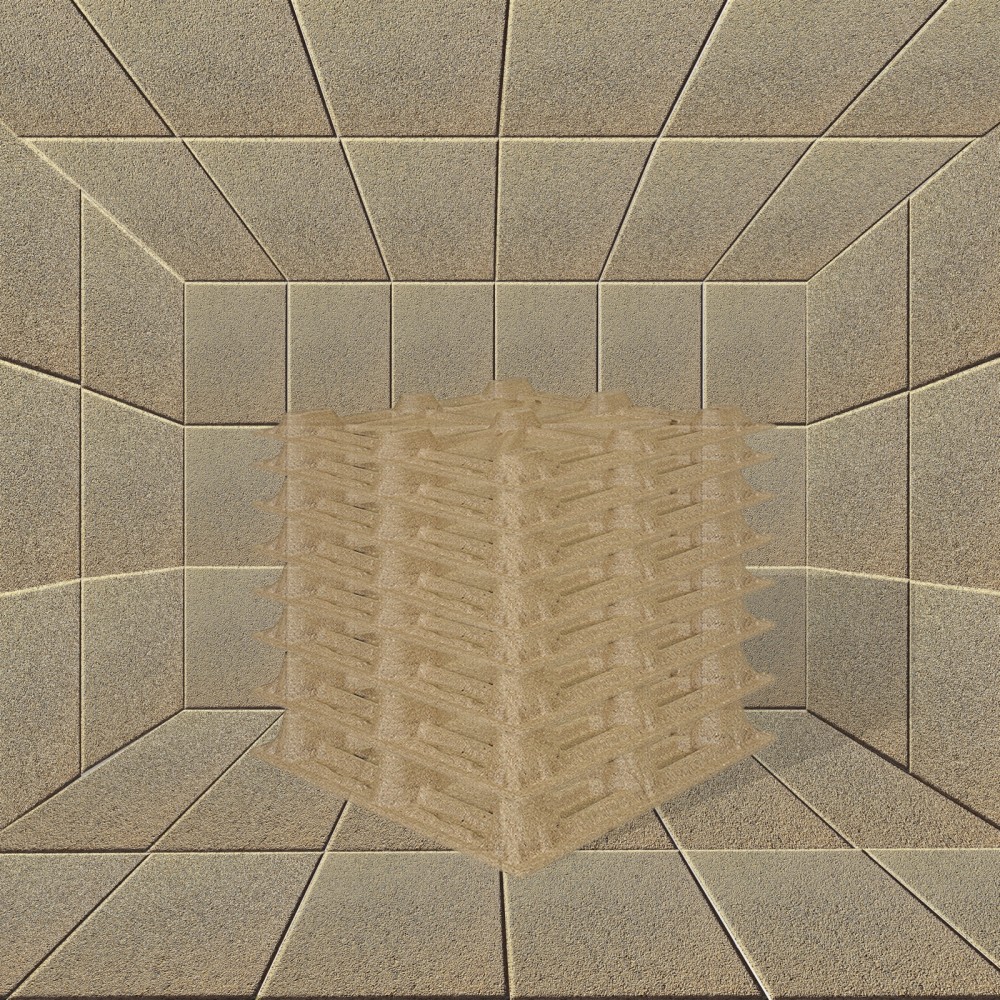
Pallets in paver room - 2017
The proposals use scale and collage as well as other simple graphic techniques to remove these objects from their original contexts, separating them from their predetermined functions and focusing only on their formal and textural qualities. Their remaining identifiability highlights the fact that these objects become somehow inseparable from the production systems they dwell in and which breathe so much specificity into them.
By no means a new method, scaling up has been used by many artists before: Claes Oldenberg and Robert Therrien, of course, but more recently Amanda Ross-Ho. XS TO XL finds a lot of value in this methodology as it continues considering the possibilities of the building-object as a potential consequence of the material-object.
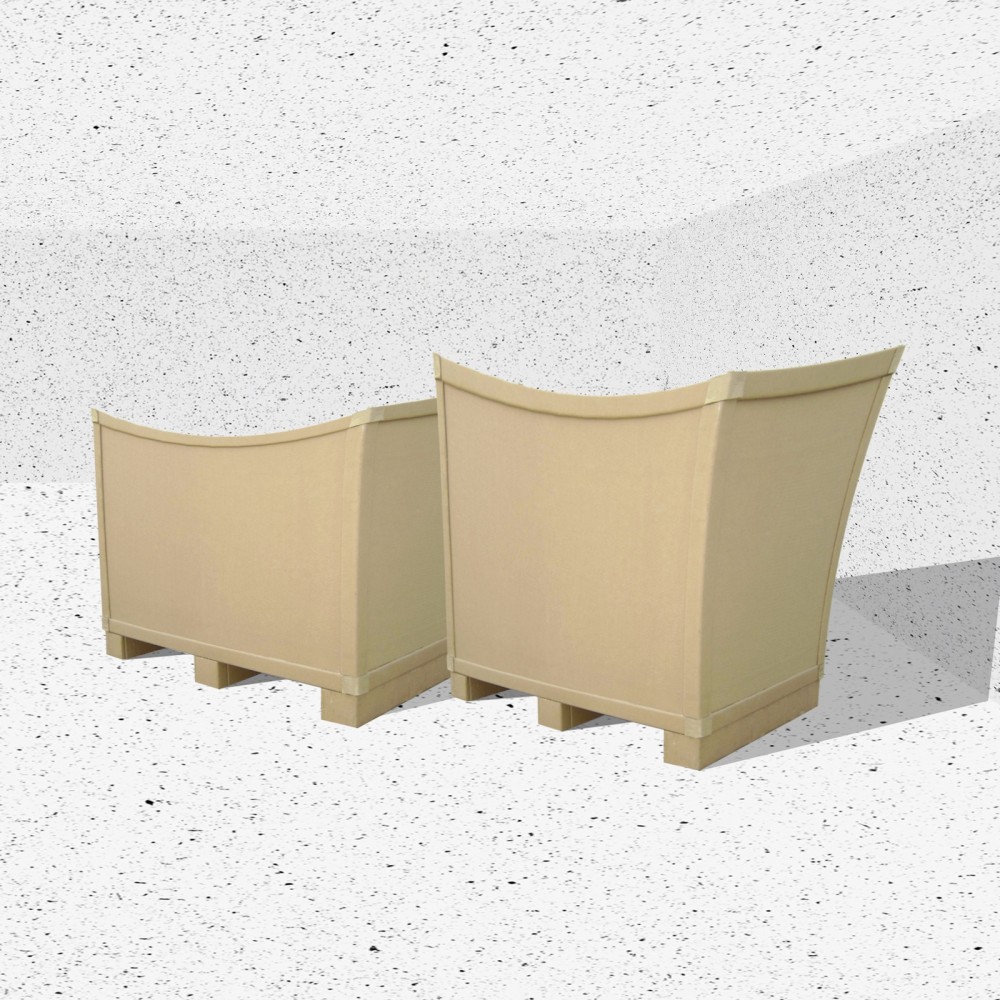
Warped Boxes in paver room - 2018
Often presented as centered in the horizon or cornered in a warehouse, these collages use elements and artifacts gathered from the general patrimony of architecture and construction and gives them a surrealist sensibility, a new background, new context. These awkward floating objects call out a certain indifference in the architectural proposal. They have an uncanniness to them — most of them wear the fact that they have been “keyed” into a new context from a different system to that in which they existed before. This is to say that the act of collaging and the slight imperfection produced from it renders explicit that the objects photographed were produced separately from the background, and their match becomes a slightly uncomfortable one. This moves the images from being ultra-real representations to a kind of speculation that may very well raise more questions than it provides answers.
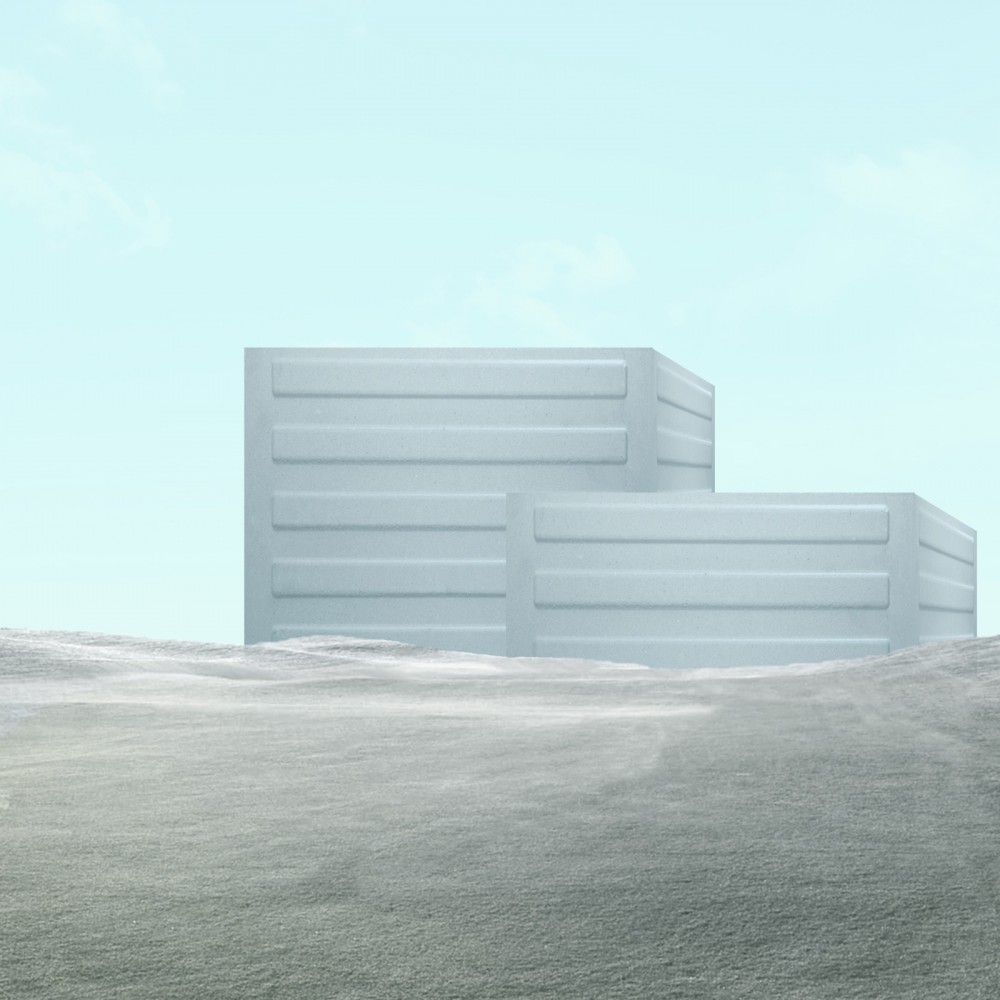
Refractory bricks as 2 buildings - 2018
Within a catalogue, each image becomes an indicator of the relationship between units and the larger infrastructures that govern them — objects that wear the formal and material consequences of the functions they were created to perform. In this way, Instagram is in fact an ideal conceptual platform for an archive/catalogue/gathering of “units,” since it is already organized in that way. It highlights each individual unit in that it shows on your feed while also letting you see the “grouping,” which starts to point towards a system or relationship. Moreover the hashtag further reveals grouping and introduces different potential ones. This is a measure of the archive as well, since it lets you consider kinship not just within the archive but among spectators/participants. How many people think of #thing as I do?
The catalogue, as a document, holds a position of authority: it names the thing, it shows you the thing, the price, etc. No affect. But that is in many ways not true. For one because there are plenty of catalogues where odd senses of nationalism and emphasis on trade and economics are plugged in: a giant American flag, mountains, or cargo containers in the background. Objects become proxies through which to discuss their larger infrastructure, the systems they navigate and represent.
Text and artworks by Laida Aguirre.
Taken from PIN–UP 24, Spring Summer 2018.

